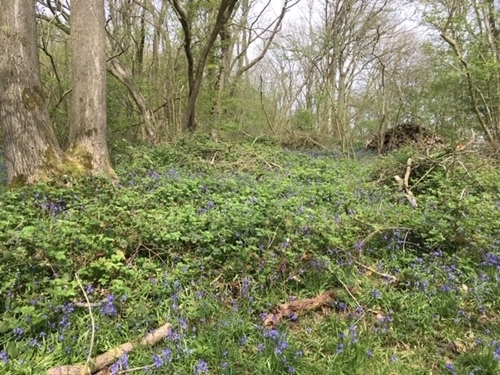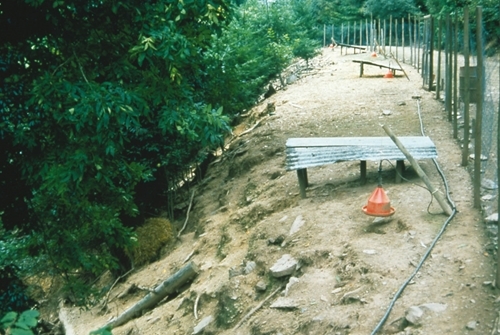Pens are used for releasing both pheasants and partridges. Crucially they provide safety, especially from ground predators, while the birds acclimatise to life in the wild. Partridge releasing differs from pheasant releasing so GWCT information for partridges can be found here. Of the two species, pheasant releasing has the greater potential to harm important habitats such as woodland because the pens are static structures and too large to move. Damage will vary relative to the number of birds released and the length of time they are kept in the pen. Low stocking densities and a short time in the pen, combined with choosing lower priority habitats, are key ways to minimise impacts.
In July or early August, six to eight-week old pheasant poults are usually placed into release pens where they remain from a few days up to six weeks before being let out to move freely between the pen and surrounding habitat. GWCT research has shown that releasing large numbers of pheasants into a pen over many years can in some circumstances lead to significant changes to ground flora, and this impact can extend for up to 15 metres around the outside. This can result in a decline in characteristic woodland flora and ‘weed species’ taking over.
 Pheasant pens should be comprised of one-third open sunny areas, one-third low escape
Pheasant pens should be comprised of one-third open sunny areas, one-third low escape
cover and one-third low roosting. Ideally this should be in a mixed mosaic to spread the
birds evenly across the entire pen. Not only will this approach reduce predation, it will
also lighten the birds’ impact on the vegetation and reduce disease transmission.

Vegetation loss and erosion on this scale is extreme, but can occur when pens
are overstocked or if other parts of the pen are dark and unattractive to the birds.
Recommendations
- GWCT science-based releasing guidelines recommend that no more than 1,000 pheasants should be stocked per hectare of release pen (400 birds per acre). GWCT research shows that this threshold density is the point at which woodland plants can start becoming negatively affected. Problems related to overstocking, such as competition, bullying, stress, feather pecking and disease build up will also be minimised by following these guidelines. The aim should be to have a ‘light touch’ on the landscape.
- If pens need to be situated in sensitive sites such as ancient semi-natural woodland, the maximum number of birds released should be reduced to no more than 700 birds per hectare of pen (280 per acre). In this situation there should be greater concern for the biodiversity of the site.
- Release pens should not take up more than one third of the total woodland area on a shoot. This includes all woodland whether or not it has a conservation interest and serves to provide unfenced habitat for birds to spread in to. Woodland suitable for releasing can include scrub patches, substantial hedgerows with trees, shelter belts and new woodland planting. However, the central parts of very large woodlands or forestry blocks (especially conifers) should be avoided unless there is adequate open sunning areas such as large glades and wide rides.
- Try to site any new pens away from areas of woodland with sensitive ground flora such as violets, speedwells and yellow archangel.
- High stocking densities for long periods of time may also mean that ground poaching, pollution and runoff could present issues if not managed appropriately. To manage this effectively, keep wide vegetated buffer zones between the pen edge and any watercourses or slopes that are prone to erosion.
- To maintain a clear pen edge, strimming is preferable to herbicide application. If herbicide must be used, keep spray zones to a minimum and don’t spray next to watercourses.
- For heavily shaded pens, thin the canopy trees to increase light levels (check if a felling licence is required prior to any work). Pheasants favour a woodland edge habitat and as such, prefer an open, sunny pen with good light levels throughout. In a well-lit pen, ground flora will recover quicker after release and birds won’t cause isolated damage to just one area. The ground cover will also serve as escape cover from aerial predators such as raptors.
- If felling trees, leave them in place for ground cover. Fallen deadwood will be quickly broken up and will provide valuable habitat for wildlife such as insects.
- Keep pens and the surrounding areas clean and tidy. Remove old wire and equipment and ensure that your pen area presents a good image for game shooting.
- If you intend to release gamebirds on SSSI sites please ensure that you obtain the necessary consents from the statutory wildlife agency for your country.
Get the Latest News & Advice
Join over 100,000 subscribers and stay updated on our latest advice, research, news and offers.
*You may change your mind any time. For more information, see our Privacy Policy.